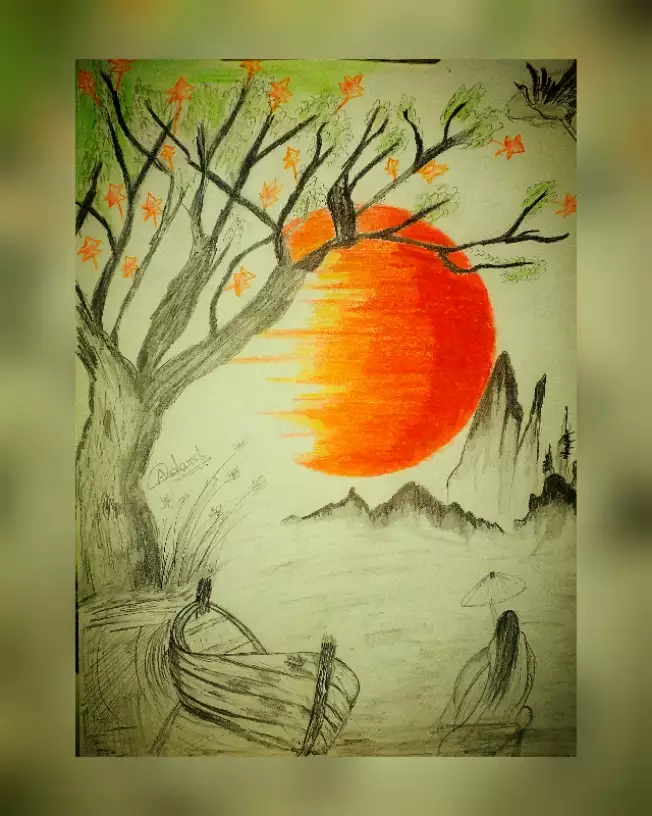The Role of Trump Art in Shaping Cultural Conversations Around Leadership
Wiki Article
Embarking on an Aesthetic Trip Via the Lyrical Analyses of Nature in Impressionist Landscapes
In the world of art history, the Impressionist motion stands out as a crucial period that transformed the way nature was shown on canvas. Musicians such as Claude Monet, Camille Pissarro, Edgar Degas, Berthe Morisot, and Vincent Van Gogh recorded the essence of the natural world via their unique analyses, creating landscapes that go beyond mere graph. Each brushstroke, each play of light and shadow, and each shade selection in their jobs talks volumes concerning the artists' deep link to nature and their ability to convert its charm onto the canvas. As we check out the lyrical interpretations of nature in Impressionist landscapes, we are invited to submerse ourselves in a globe where reality and feeling link, providing a glance right into the artists' extensive gratitude for the all-natural globe.The Exciting Brushstrokes of Claude Monet
Claude Monet's mastery of brushstrokes goes beyond simple method, imbuing his landscapes with an angelic high quality that mesmerizes and astounds audiences - trump art. His cutting-edge usage of shade and light, combined with his distinctive brushwork, produces a sense of motion and life within his paints. Monet's popular series of works showing water lilies and his famous haystacks showcase his ability to capture the fleeting results of light and ambience
Taking On Light and Shadow With Camille Pissarro
Symbolizing a comparable respect for the interaction of light and shadow, Camille Pissarro's creative vision unfolds as a harmonious expedition of the environment's luminous subtleties. Pissarro, an essential figure in the Impressionist movement, masterfully recorded the vibrant partnership between light and shadow in his landscapes. His experienced use of color and brushwork permitted him to convey the subtle shifts in light that define various times of day and seasons.Pissarro's paintings usually include dappled sunlight infiltrating leaves, casting complex patterns of light and shadow on the planet below. In works such as "Hoar Frost, the Result of Snow, Pontoise," Pissarro skillfully illustrates the crisp illumination of wintertime sunlight juxtaposed with the cool darkness that define the snowy landscape. By accepting both light and darkness in his structures, Pissarro invites visitors to submerse themselves in the natural beauty and short-term impacts of light in the world around them.

Via Pissarro's works, we are reminded of the transformative power of light and darkness, inviting us to pause and appreciate the short lived minutes of elegance existing in the everyday landscapes that border us.
A Harmony of Colors by Edgar Degas
Edgar Degas manages a vivid symphony of colors in his masterful art work, infusing his compositions with a dynamic interaction of hues that astound the viewer's look. Recognized mainly for his ballet professional dancers and intimate scenes of Parisian life, Degas skillfully controlled shades to convey mood and movement in his paints. trump art. His use of strong, contrasting colors and subtle tonal variations developed a sense of depth and vibrancy within his worksDegas' color palette commonly contained rich blues, deep eco-friendlies, and warm oranges, which he used with positive brushstrokes to record the essence of his subjects. Whether representing a ballerina mid-performance or a team of good friends conversing at a coffee shop, Degas' shades not only depicted the scene but also evoked a sense of emotion and energy.
Moreover, Degas' testing with light and darkness added an additional layer of complexity to his shade structures, enhancing the total environment of his paintings (trump art). Via his skilled control of color, Degas developed a visual symphony that continues to reverberate with customers today
Discovering Nature's Calmness With Berthe Morisot
Berthe Morisot's artistic vision offers a tranquil departure from the dynamic color symphonies of Edgar Degas, as she records the serenity of nature in her expressive landscapes. Recognized for her delicate brushwork and intimate representations of daily life, Morisot's landscapes exude a sense of tranquility and consistency.Morisot's paints typically include soft, low-key tones that convey a feeling of peace and tranquility. Her jobs, such as "The Cradle" and "Summertime's Day," showcase her capability to websites capture the subtle elegance of nature in a manner that is both relaxing and contemplative to the viewer.
Unlike several of her Stylist counterparts who concentrated on strong colors and vibrant compositions, Morisot favored to develop mild, reflective scenes that invite the visitor to stop briefly and mirror. Through her skillful use light and darkness, Morisot develops a feeling of peace that resonates with the customer on a deep emotional level.
The Emotional Landscapes of Vincent Van Gogh
Vincent Van Gogh's landscapes clearly share a deepness of emotion with their dynamic brushwork and meaningful use shade. The Dutch post-impressionist artist is renowned for his capability to record intense and raw feelings in his paints, going beyond typical depictions of nature. Van Gogh's turbulent personal life, marked by mental wellness battles, greatly affected his art, instilling his landscapes with a sense of worry, sorrowful, or enthusiasm.In jobs such as "Starry Night" and "Wheatfield with Crows," Van Gogh's swirling brushstrokes and lively color selections evoke a profound emotional feedback from viewers. The turbulent skies and agitated landscapes in his paintings show his inner turmoil and psychological turbulence, welcoming customers to look into the complexities of his mind.
Van Gogh's one-of-a-kind aesthetic language, defined by exaggerated viewpoints and vibrant usage of color, produces landscapes that reverberate with customers on a deeply emotional degree. With his art, Van Gogh invites us to see nature not simply as an external reality yet as a mirror of our innermost sensations and feelings.
Verdict
In final thought, the impressionist landscapes of musicians such as Claude Monet, Camille Pissarro, Edgar Degas, Berthe Morisot, and Vincent Van Gogh use a unique and exciting visual interpretation of nature. Via their use of brushstrokes, feeling, color, and light, these musicians have created a symphony of pictures that evoke a sense of tranquility and charm in the all-natural world. Their jobs continue to influence and Your Domain Name captivate audiences with click here now their lyrical interpretations of the landscapes around us.Each brushstroke, each play of light and shadow, and each color option in their jobs talks volumes concerning the musicians' deep connection to nature and their ability to equate its elegance onto the canvas. His ingenious usage of color and light, combined with his unique brushwork, produces a sense of motion and life within his paintings. His proficient use of shade and brushwork permitted him to communicate the refined shifts in light that define different times of day and seasons.

Report this wiki page